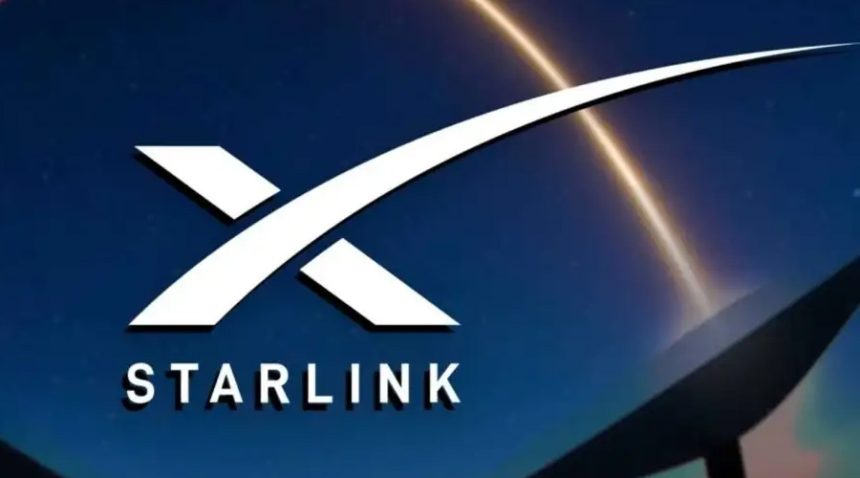High-speed, low-latency internet—where towers can’t go, Starlink can
India’s telecom industry is one of the largest in the world. As of late 2024, the country had around 1.19 billion phone users and nearly 949 million broadband users. Despite this impressive growth, a huge part of India’s population, especially in rural and remote areas, still struggles with poor or no internet access. That’s where Starlink, the satellite internet service owned by Elon Musk’s SpaceX, comes in. Starlink’s arrival in India could change the way the internet is delivered across the country.
Starlink Gets Green Light to Operate in India
In June 2025, India’s Department of Telecommunications (DoT) gave Starlink a special license known as the Global Mobile Personal Communication by Satellite (GMPCS) license. This allows Starlink to start offering its satellite-based internet services in India.
Starlink becomes the third satellite internet provider in India, joining OneWeb and Jio-SES. The license is a big step forward because it allows Starlink to bring high-speed internet to mountain areas, forests, deserts, and villages, where traditional internet companies don’t have towers or cables.
Experts predict that the satellite internet market in India could be worth around $1.9 billion by 2030, showing just how big the demand is.
What Starlink Plans to Offer
Starlink’s service in India is designed for users who live in areas with poor internet access. Here’s what the company is offering:
Monthly Plans: Internet services for around ₹3,000 per month.
Setup Cost: A one-time payment of around ₹33,000 to buy the dish and other equipment.
Free Trial: A 30-day free trial to help users try the service before paying.
Starlink has already launched over 7,600 low-Earth orbit satellites around the world. These satellites deliver high-speed, low-latency internet that works even in remote regions. This makes it a great option for villages, border areas, disaster zones, or hilly regions where other networks don’t work well.
Working with Indian Telecom Companies
Instead of working alone, Starlink plans to team up with major Indian telecom companies like Reliance Jio and Bharti Airtel. These companies will help sell Starlink’s services and hardware through their existing stores and networks.
They will also take care of:
Customer support and service
Installation and repair
Following Indian rules for security, data privacy, and local content
This partnership model helps Starlink enter the market smoothly while avoiding conflicts with existing telecom companies.
Challenges from Regulation and Pricing
Although Starlink has approval to operate, several challenges remain:
Spectrum Fees: Indian authorities are deciding how much companies should pay for using satellite spectrum. Right now, the fee suggested is 4% of annual revenue for satellite companies, while mobile companies pay over 25%. Jio and Airtel argue this is unfair.
License Duration: Starlink wants a 20-year license, but Indian authorities are offering shorter licenses of 3–5 years to allow for regular reviews and changes.
Security Rules: India requires companies to store data locally, use approved encryption, and follow rules for national security. Starlink will need to meet these standards.
These issues are being discussed by India’s telecom regulators before final policies are announced.
How Starlink Can Help Rural India
More than 40% of people in India’s villages still don’t have a stable internet connection. Laying fibre cables or building towers in these areas is expensive and difficult. Starlink can quickly bring internet to such places using satellites.
Speeds offered by Starlink are expected to be between 50 and 150 Mbps, with delays as low as 20 to 40 milliseconds. This is fast enough for:
Online education
Telemedicine (online health services)
Video calls
Running small businesses
While India is trying to expand 4G, 5G, and fibre networks under its National Broadband Mission, satellite internet can fill the gaps where these technologies are not practical or affordable.
Competition from 5 G-Based Fixed Wireless Access
Indian telecom companies are also working on 5G Fixed Wireless Access (FWA), which is internet delivered through 5G instead of cables. This is cheaper and quicker to deploy than laying fibre.
Starlink will directly compete with these services, especially in places where setting up 5G towers is difficult. However, Starlink is more expensive than regular broadband:
Indian broadband plans currently cost between ₹400 to ₹4,000 per month.
Starlink’s price of ₹3,000 per month, plus setup costs, makes it a premium service, affordable mostly for those who have no other option.
How Indian Telecom Companies Are Responding
Though Airtel and Jio raised concerns about unfair pricing advantages for satellite providers, both companies are also partnering with Starlink. This shows they believe satellite internet is not a threat, but a complement to their existing services.
Their strategies may include:
Bundling Starlink with mobile or fibre plans
Offering Starlink as a backup for business customers
Creating cheaper satellite plans for remote villages
This way, telecom companies can still grow their business while helping Starlink expand in India.
Technical and Environmental Concerns
Satellite internet is not perfect. There are some important issues to consider:
Environmental Impact: Starlink’s satellite system may cause more carbon emissions per user compared to traditional broadband.
Weather Disruptions: Heavy rain, clouds, or mountains can interrupt satellite signals.
Space Traffic: Thousands of satellites in low-Earth orbit increase the risk of collisions and space junk.
India’s geography—ranging from deserts to forests to high mountains—could make it difficult to provide consistent service in all areas.
What’s Coming Next
The next year will be crucial for Starlink in India. Some of the important developments to watch:
The government is finalising rules on pricing, licences, and security.
Starlink is starting test services in selected areas.
Feedback from early customers on internet speed and service quality.
How telecom companies adjust their plans and prices to match Starlink.
The big test will be whether Starlink can convince enough users in remote areas to invest in its high-cost service, and whether the service delivers consistent quality.
Broader Impact on India’s Digital Growth
If Starlink becomes successful, the effects could be huge:
More people in rural India can access education, jobs, and healthcare online.
Indian telecom companies may speed up their expansions to compete.
Government programs for digital inclusion will get a boost.
India could become a model for hybrid internet networks—mixing fibre, 5G, and satellites—for other developing countries.
Starlink’s entry into India marks a major shift in the telecom industry. The company promises to solve the long-standing issue of rural internet access using its global satellite network. With support from Indian partners and approval from the government, Starlink is ready to begin services soon.
But challenges remain, especially in pricing, regulation, and customer adoption. How well Starlink navigates these hurdles will decide whether it becomes a powerful player in India’s digital future or just another expensive experiment.
The coming months will show whether the stars align for Starlink—and for millions waiting for quality internet in the farthest corners of India.





